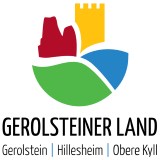The Lava Flow of Sarresdorf in Gerolstein
The lava flow of Sarresdorf originated in the heart of Gerolstein. Around 30,000 years ago, it was the youngest lava flow in the Eifel to roll down the valley at a good 1,100°C.
Molten lava rises from the earth's crust. The Papenkaule cinder volcano is formed with a crater near the Munterleyfelsen. Through cracks in the dolomite rock, an enormous outflow of lava occurs in the area of the Hagelskaule. The molten material pours southwards into the Kyll valley. In a second phase, the valley is filled up by the lava masses and a natural Kyll reservoir forms as a secondary form. After many years, a new river bed is dug south of the lava flow - the dammed lake empties.
In the settlement history of the time, the Sarresdorf lava flow played a considerable role because it offered a valley location protected from the floods of the Kyll. Although there are no Neolithic finds, it is home to the largest Roman settlement in the Gerolstein area, the Villa Sarabodis, in the immediate vicinity of which Frankish settlements developed, from which Sarresdorf grew.
With the construction of the railway line in the 19th century, parts of the lava flow and its dimensions became visible. Today, traces of the Sarresdorf lava flow are still visible, especially in the area of the Gerolstein spa gardens.


